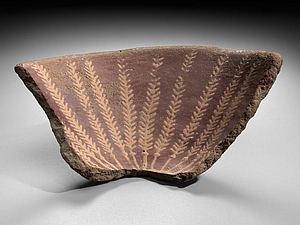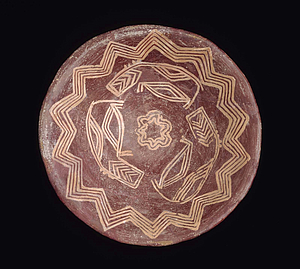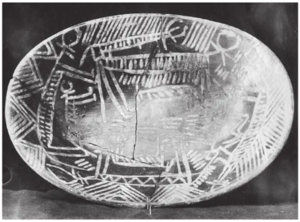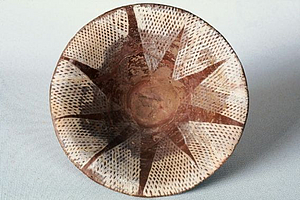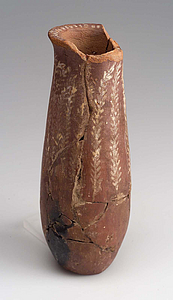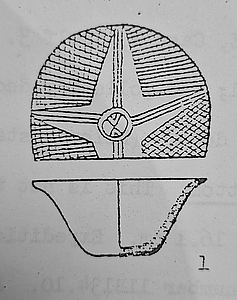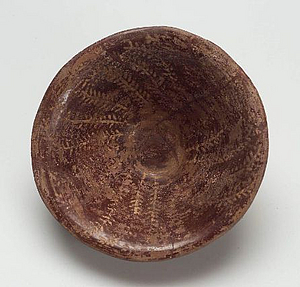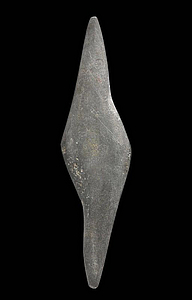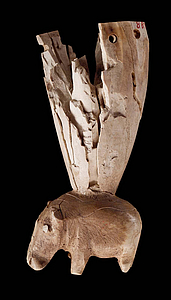Mesaid
The cemetery of Mesaid was explored in the early 20th century over the course of two excavation seasons; Georges A. Reisner was granted a large concession in the region of Naqa ed-Deir, which comprised, beside Naqa ed-Deir and Mesaid, the sites of Sheikh Farag, Mesheikh, and Naqa el-Hai.
This was first known as the Hearst expedition (1899 -or 1901? –1905). When work resumed in 1910, it became the Joint Harvard University – Boston Museum of fine Arts Egyptian Expedition (1910–1924). Mesaid proper was only excavated under the auspices of the latter.
The ca. 715 tombs date predominantly to the mid-to-late predynastic, with a minority of Naqada I–IIAB tombs.
The material from the excavation not kept in Egypt was sent to Boston; object considered as "archaeological" is located at the Harvard Peabody Museum of Archaeology and Ethnology; the 'finer' material is located at the Museum of Fine Arts. According to P. Ehrlich (The predynastic of Mesaeed, 3–4), all the material in the Peabody was found during the second season of work. Unfortunately, tomb numbers written in pencil on objects are often illegible.
Archaeological activity :
First season: 14.04.1910–23.04.1910. Fieldword directed by George A. Reisner, assisted by Clarence Stanley Fisher. 231 tombs cleared in 9 days.
Second season: 21.03.1913–06.04.1913. G.A. Reisner sent Louis Caulton West to work on his behalf. Fieldwork was directed by head workman rais Said Ahmed (Mahmud Ahmed Said Diraz, 1890–1926). 485 tombs were excavated; an area was investigated ca. 350m. east of the main cemetery, where ca. 50–60 heavily plundered tombs were found. It is unclear if the 485 tombs includes these latter tombs or not.
